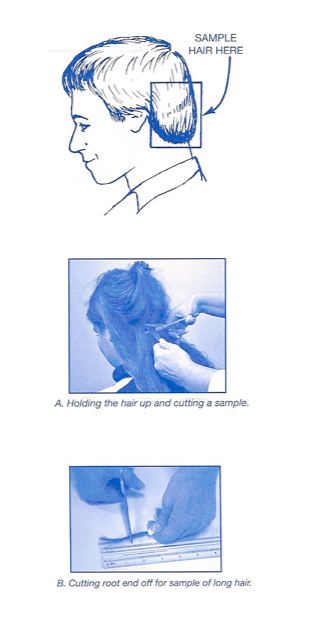JOIN MY MAILING LIST
AND GET A FREE GIFT!

Mineral imbalances in the body can alter biochemistry resulting in depression, hypoglycemia, hyperactivity, headaches, hypertension, arthritis and more.

The requirements for getting an accurate representation of the present trace mineral levels from a hair analysis include taking a proper sample. These instructions describe the correct procedure to follow:
1. SamplingHair should be clean and dry when it is being sampled. The sample should be taken between four and twenty four hours after washing. For the best quality results, the sample should not be dyed, bleached or permed. Retest samples should be taken from the same area as the original sample if at all possible.
2. Sampling LocationHead hair taken from the nape of the neck (see illustration on the side) will provide the best sample. The growth of the hair here is relatively steady and should give good, consistent results.
As an option, axillary hair, pubic hair or other body hair may be used. The growth pattern here varies and is rather sporadic, but it produces adequate results. Note, however, that samples from the head and different parts of the body should not be mixed.
Sampling axillary or pubic hair is also a very good way to confirm that elevated toxic minerals which have been found in the head hair are present in the whole system.
3. Equipment NeededA standard rat-tailed comb and regular stainless steel scissors are all that is basically needed. For short hair, thinning shears may be used to keep from disturbing the hair style as much as possible. With long hair, a hair pin or clip may also be useful
4. Cutting a SampleComb and lift a section of hair at the nape of the neck. Either pin or clip the section or have the patient hold it up out of the way. Separate a smaller section (as shown in Photo A) and cut the hair off as close to the scalp as possible. For short hair 1 1/2" in length, or less use the entire sample. For long hair over 1 12" in length cut off and use 1" to 1 1/2" of the hair from the end that was next to the scalp (the root end, as shown in Photo B). Discard the rest.
The sample should be about the size of one heaping tablespoon.
Back to Nutritional Balancing Page



